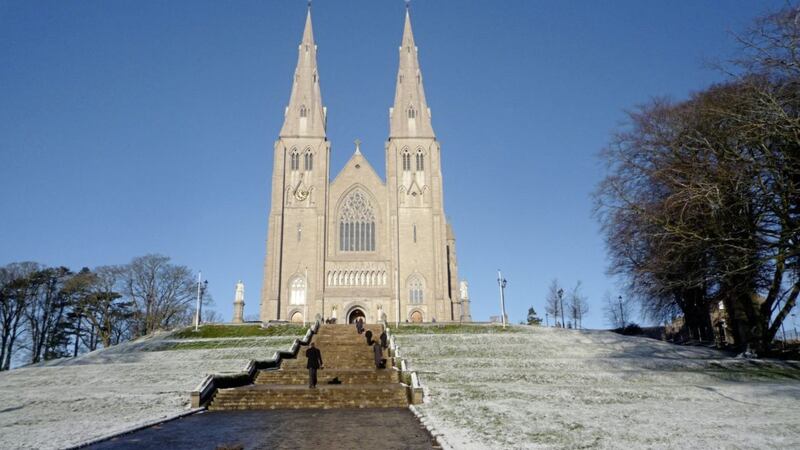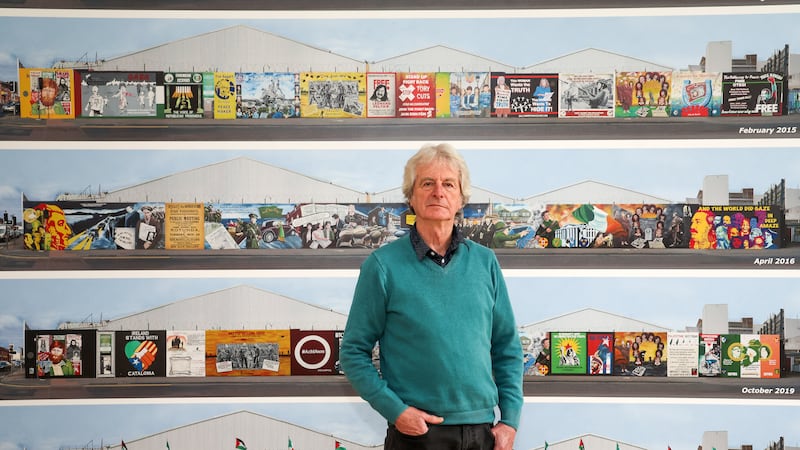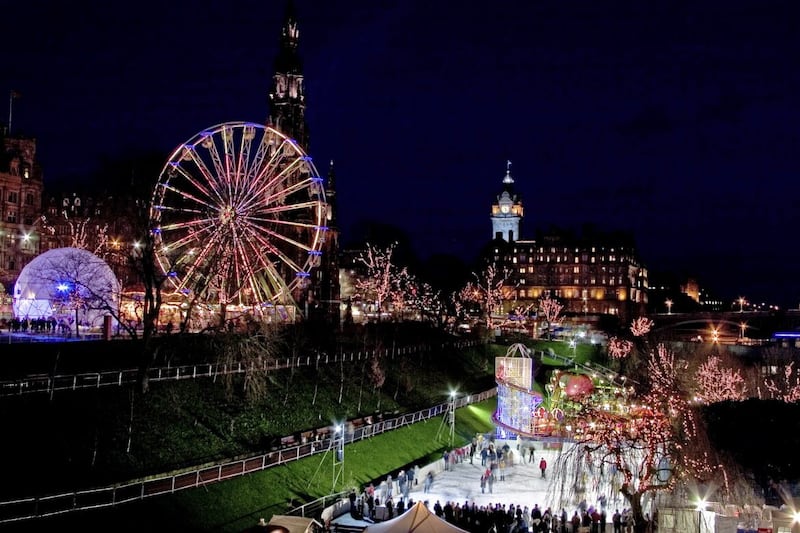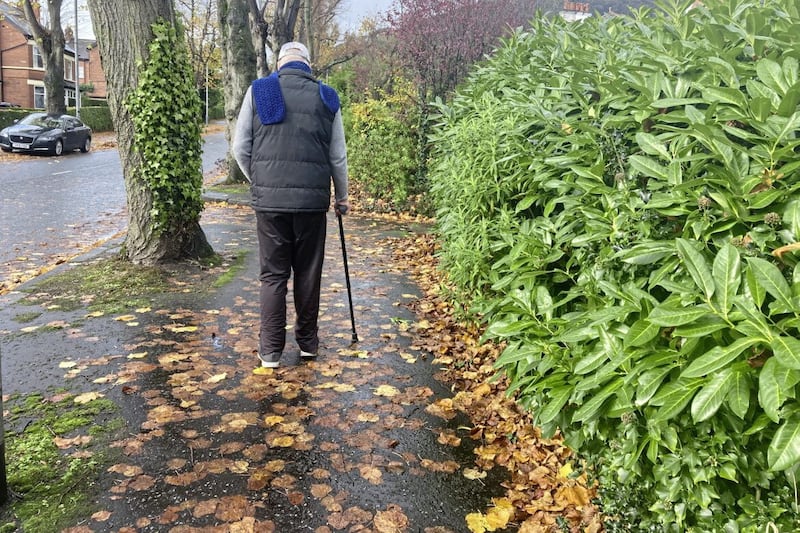I HAD the great pleasure of taking part in Wednesday’s BBC Radio 3 programme Sequence of Music and Readings for New Year’s Day from St Patrick’s Catholic Cathedral in Armagh.
Part of the city’s Charles Wood Festival, this celebration is under the direction of BBC producer Richard Yarr. He’d gathered together The Ulster Orchestra and conductor David Hill, the Charles Wood Singers, The Most Reverend Eamon Martin, Archbishop of Armagh and Primate of All Ireland, in whose magnificent cathedral we met, and The Most Reverend Dr Richard Clarke. And me!
Although pre-recorded, the music and words reflected the New Year, the prayers and the hymns and my two poems – Old and New Year Ditties by Christina Rossetti and Ring Out, Wild Bells by Alfred Lord Tennyson – were perfect for the occasion.
One verse reads:
Ring out false pride in place and blood,
The civic slander and the spite;
Ring in the love of truth and right,
Ring in the common love of good.
And the music soared up and around the vast auditorium where a congregation joined in the celebration.
Composer Charles Wood was born in Armagh city in 1866 and is remembered as an Irish composer and teacher. At Cambridge his pupils included Ralph Vaughan Williams and also Herbert Howells at the Royal College of Music. After an early life steeped in music and learning his craft, Wood became professor of music in the University of Cambridge and is chiefly remembered for his Anglican church music.
The setting in St Patrick’s was imposing – the stained-glass windows, the pale marble, vaulting and terracotta ceiling. Spectacular is the Rood Screen of Carrara marble from Tuscany, with its oak, enamel and gold leaf. This was one of the most spectacular buildings I’ve visited recently, mostly and sadly because of funerals...
St Brigid’s
Sitting in St Brigid’s I was reminded of an article I wrote some years ago about the building of this unique church. An acre of land in leafy south Belfast, 180,000 handmade bricks, an inspired architect and skilled bricklayers – mainly Thomas Doran and Joe Poland – who enjoyed the mixing and matching, laying and layering and the knowledge yet to come of the awards that would result.
St Brigid’s Catholic Church on Belfast’s Malone Road was built by Newry-based construction firm Felix O’Hare and Company and architect Kennedy FitzGerald Associates. It was designed to seat 800; wooden pews of natural ash, stained-glass windows taken from the original church on the site; gifts from Church of Ireland, Methodist and Presbyterian denominations; the altar amber and font in French limestone sculpted in Dublin.
The Stations of the Cross are in slate carved in Cork, the Tabernacle, Paschal Candle and Cross in copper and bronze made by Northern Ireland jewellers Steensons and additional stained glass created in Donegal, with the pipe organ designed and built in Co Antrim.
Fortwilliam and Macrory
The Institute of Christ the King Sovereign Priest bought the Fortwilliam and Macrory Presbyterian Church on Belfast's Antrim Road where their last service was held just over a year ago.
Sitting in the imposing building at the inaugural Latin Mass earlier this month, the church seemed huge, built in the day when there was a growing and affluent population in north Belfast and when families travelled to morning and evening worship and pews were filled both downstairs and in the balcony.
An impressive building inside and out, at one time boasting the tallest spire in Belfast, it has polished woodwork and glowing stained-glass windows. And some have the ability to rise from the ashes, as did St Colmcille’s in Holywood where I attended Fr Stephen McBrearty’s Midnight Mass on Christmas Eve, the perfect start to the real meaning of this special time.
First Dromore
It’s been a month of church visits – as I say, unfortunately, mostly funerals and one of the most memorable was held in First Dromore Presbyterian Church. In contrast to the others, a rural church built in early 1900s, worshippers sit in ‘boxes’ of pale wood, each holding five or six people, with a door at each end. More friendly, possibly because people knew each other outside of the church as well as inside and the visitor was absorbed into a warm and loving service in every way.
St Anne’s Cathedral
Most recently I sat in St Anne’s Cathedral at the same time as a funeral was happening in the tiny, exquisite, 15th century St Nicholas’s Church in Denston, Suffolk. With friends we gathered to think and give thanks for the life of a friend. An austere interior, the talking point surrounding St Anne’s has been the 250ft-high Spire of Hope, lightweight because of ‘soft’ foundations.
Like many buildings in the Cathedral quarter, it's built on ‘Belfast sleech’ – soft mud, silt and sand.
Interesting is the fact that you can stand at the end of the aisle and observe the ups and downs of the marble floor. You could be excused for getting that sinking feeling.
During such a concentration of churchgoing, I’ve been struck by the variation of buildings we have to enjoy, although as far as Sunday service is concerned, many congregations are shrinking in number, certainly in Belfast.
For instance, in the Antrim Road area alone Carlisle Memorial Methodist, once the largest downtown church, had ceased to be a place of worship by 1982 and is now earmarked as the home of the Ulster Orchestra.
Across the road, St Enoch's emptied, and as you move up the Antrim Road, Duncairn Presbyterian is now an arts centre, McCrory Memorial and St James’s have all closed their doors and, most recently, Cavehill Methodist have given notice that their final service will be held in October 2020.
Perhaps small is more beautiful these days, although there is still a need for the glories of cathedrals.
:: The New Year's Day service from Armagh will be broadcast on Radio 3’s Choral Evensong on Wednesday afternoon at 3.30pm and repeated on Sunday at 3pm.









